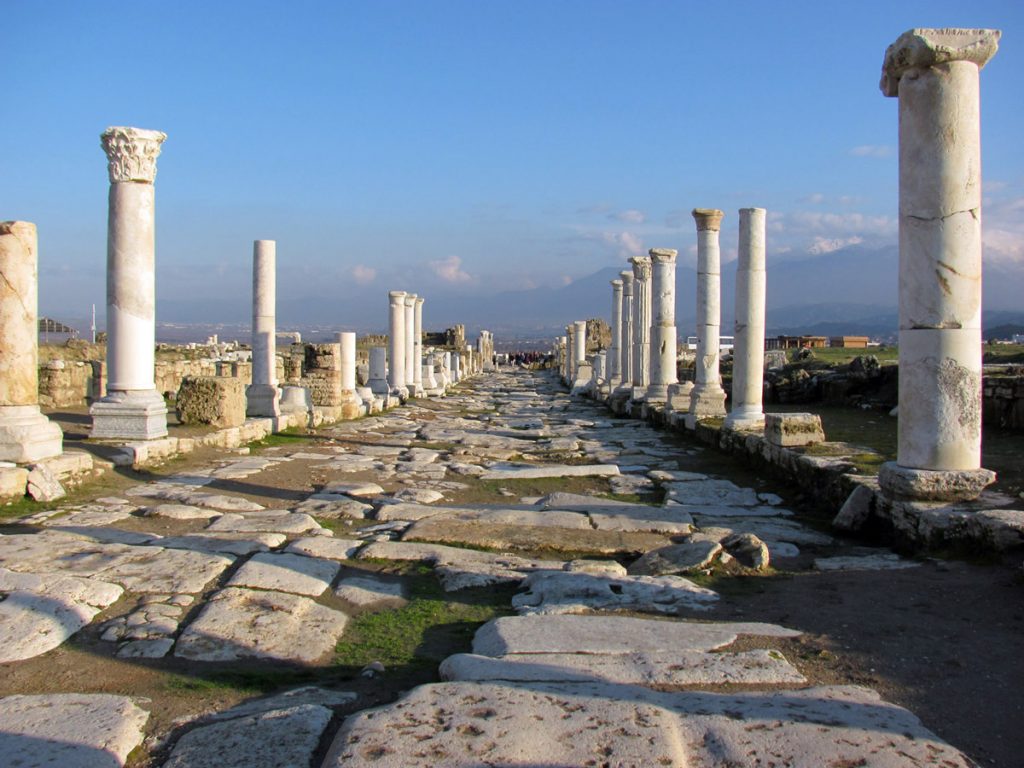“Work in the agora is very important. It covers an area of 35,000 square meters. There is 10.8-meter columned gallery here that we call the portico. We have revived huge columned galleries, and there were ruins of buildings that have collapsed in earthquakes since the 4th century.”
– Celal Şimşek, head of the Laodecia excavations.

PHOTO: evretour.com
LAODICEA, TURKEY – Excavations in Greece’s ancient city of Laodicea have been ongoing for thirteen years. This year, the teams working on the site are focusing on the city’s one-of-a-kind agora and western theater.
Every good Hellenistic city had an agora – or a city center. Think of it like a marketplace. There were shops, wells, public toilets, men discussing philosophy and politics, sorcerers and diviners and fortune tellers, children playing tag, and women going about their daily shopping. What made Laodicea’s agora so special?: It’s sacred.
The agora is home to a temple, making the it the largest sacred field in Anatolia. The agora collapsed during an earthquake in 495 AD, and has just now been completely unearthed. Archaeologists have found a wealth of artifacts, including sculpture heads, ceramic fragments, and pots and pans. In 2016, over 250 artifacts were recovered and sent to the local museum for safekeeping. The archaeological team also has over 300 artifacts still on-hand at the site.
![The remains of 'Temple A' in the Laodicean agora. [PHOTO: wikimedia]](https://historythings.com/wp-content/uploads/2017/01/1024px-Laodicea_40-1024x768.jpg)
The remains of ‘Temple A’ in the Laodicean agora. [PHOTO: wikimedia]
During the Roman period, it was one of Rome’s “free cities”. The citizens of Laodicea had all the wealth and luxury they possibly could, and funded hundreds of gorgeous buildings. The city even had its own coin mint. The historian, Strabo, writes that the city was popular and wealthy because the soil there was fertile and the inhabitants were high-class Roman citizens.
Researchers and historians are still working on excavating the ancient city, and they expect to find many other artifacts and buildings in the years to come. An ongoing project has also begun to restore the ruins to their original state and preserve much of the city’s amazing architecture for years to come.
“Laodicea will become one of the world’s most popular places to see in the next three or four years. It has lots of archaeological material. The northern sacred agora is the only one in the world. The revival of the 100-meter-long and 11-meter-high wall in the back, which is covered with paintings, is particularly important for world archaeology. The roof tiles here will also be restored to their original state.”
– Celal Şimşek, head of the Laodecia excavations.

